News
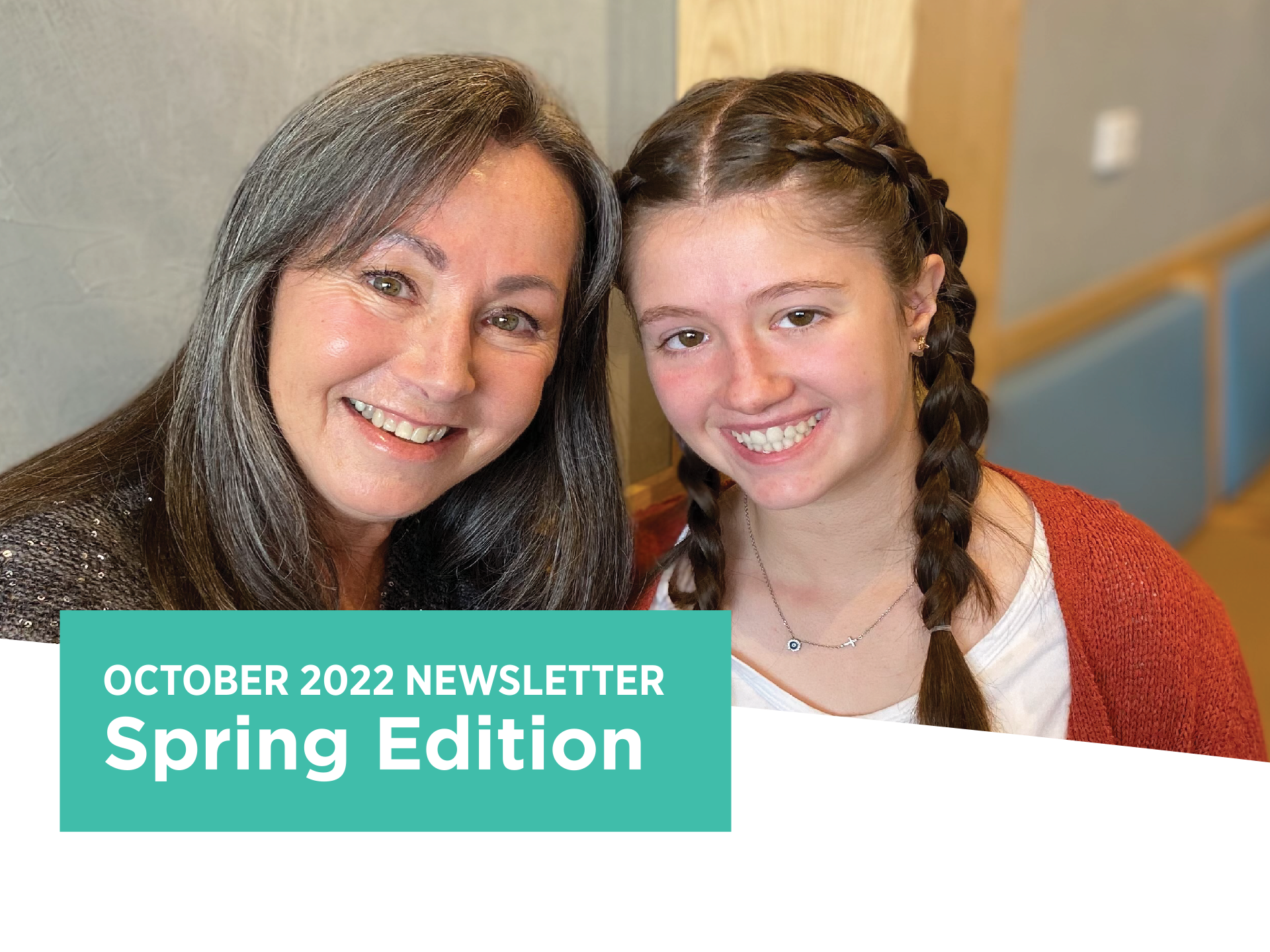
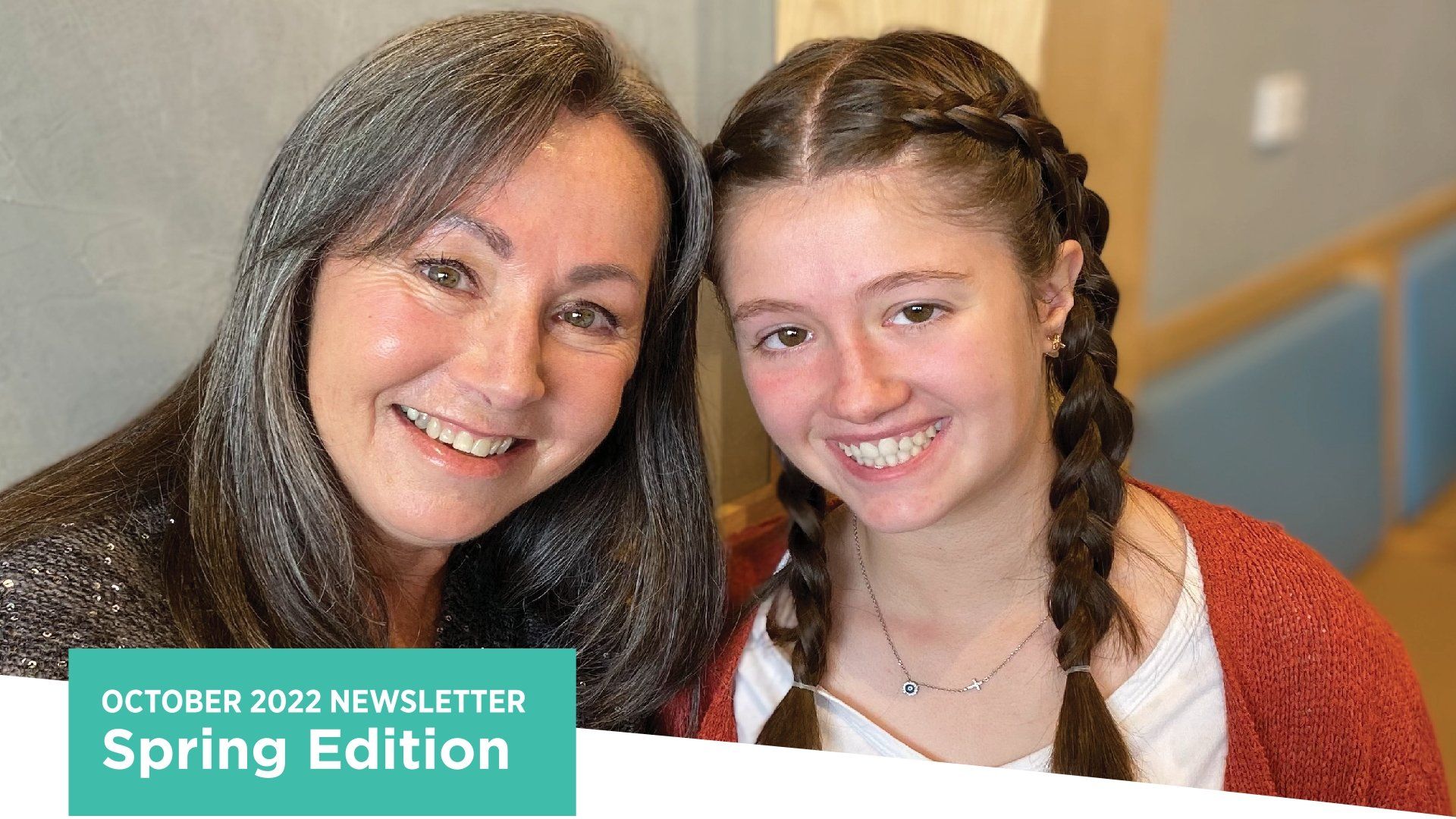
A Grandparent's Heavy Load
Yvette Winter, CA Board Member
In the early days of the Women’s and Children’s Hospital, for five years I held the role of Business Manager for the Surgical Division. I worked alongside Professor David who had been appointed as the Surgical Division’s Chief of Surgery. It was there that I learned about the amazing work of the Australian Craniofacial Unit where the Professor was also Head of that department.
Never did it cross my mind that later in my life, I would be guiding my own daughter to seek out Professor David, who became the co-ordinator for the surgical care of my grand-daughter’s congenital condition.
We grandparents carry a doubly heavy load supporting the shock and trauma our children experience when they as parents are given an unfavourable diagnosis for their own child and learn how slow and long the journey ahead will be.
Then there is the worry we have about the impact this will have for our grandchild’s future. If ever our ability to be stoic is tested, it is in this dual support role. I was fortunate to have worked in the healthcare system and knew how best to navigate it and seek out help.
Today, my lovely 16-year-old granddaughter, Lexi, who has one more operation to complete the needed surgical interventions, is a most beautiful and resilient human being. Due to other co-morbidities, Lexi will require specialist medical care for the remainder of her life, but she takes this knowledge in her stride. I saw this attribute in craniofacial children well before she was born. They are wise old souls, incredibly perceptive and tolerant of the stressful interventions they must endure.
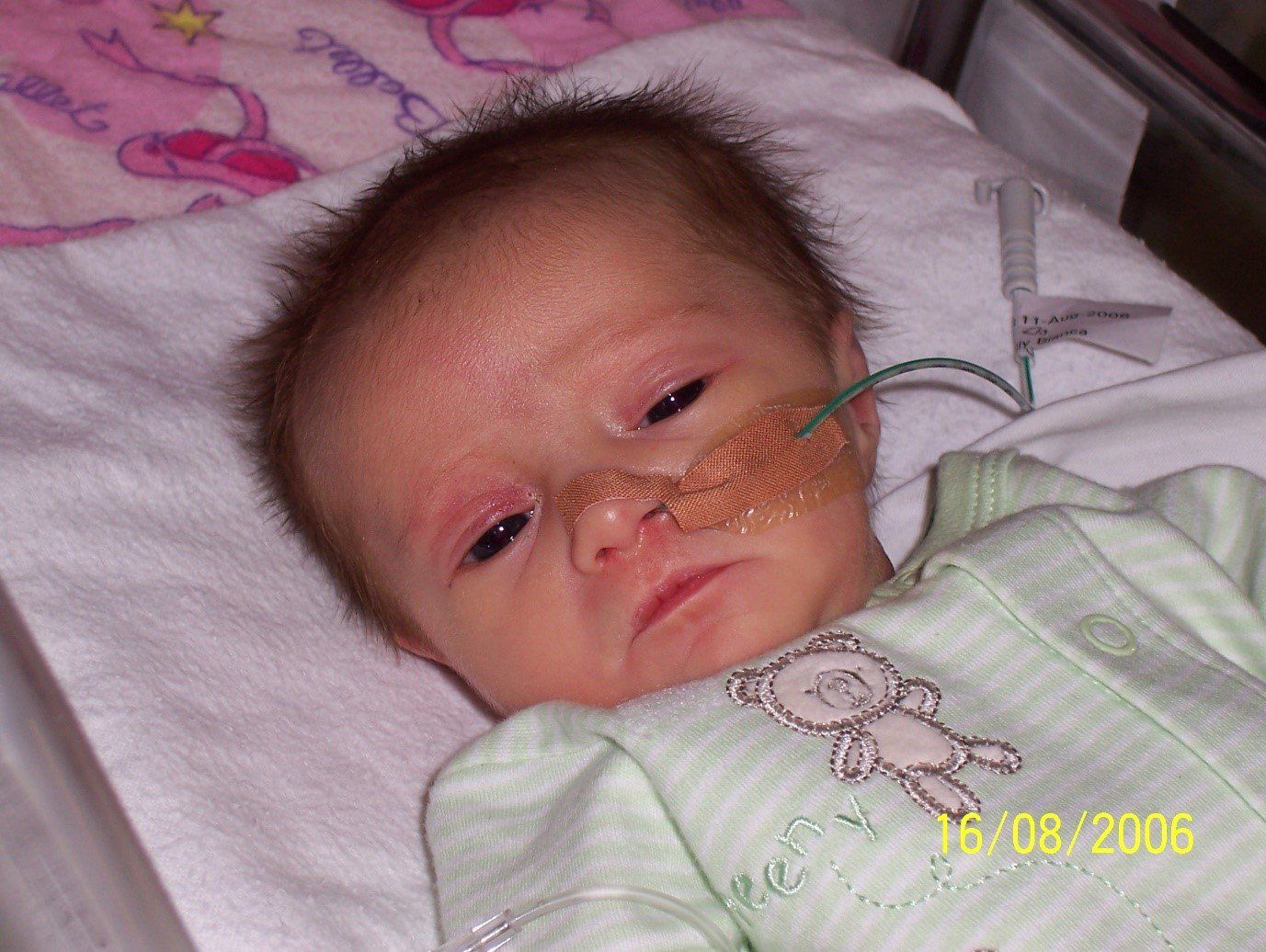

I was fortunate to observe the care that Professor David coordinated involving an impressive team of specialists who collaborated to craft individual care plans, with the patient at its core. They are treatment plans that cannot be rushed. While it is understandable that as families we seek quick rectification, this is not in the interest of achieving best outcomes intended to last a lifetime. One critical aspect is to assure that growth plates are not damaged through a child’s various growth phases, because such damage is permanent and there can be no turning back.
The early work starts with developing a bond and trust between the team of clinicians, the patients, and their families. Together they have a long journey ahead and many frustrations to endure. Let me demonstrate this with a descriptive visual. By chance, I happened to walk into the Craniofacial Department to see Professor David, impeccably dressed in a suit and tie, and sitting on the floor in the waiting room having an in-depth conversation at eye level with some young craniofacial patients. The bond and trust was clearly evident, and so important to their continued wellbeing.
Importantly, we promote the work of multidisciplinary craniofacial teams extending from cradle to the grave. The support our Foundation provides is not limited to congenital issues in children. We support the financially disadvantaged in the long-term, and often well into adulthood. Our support beyond congenital conditions incorporates adults who benefit from the investment that we as a Foundation put into research and teaching. So, when we speak of ‘craniofacial’ we include the treatment needed following sporting injuries, playground injuries, violent assaults, road accident trauma, and head and neck cancers, some of which are truly horrific.
Paul Tessier, as the father of craniofacial surgery and Professor David’s mentor in his early career, recognised that an adequate workload that includes regular practice is required to develop and refine the surgical skill set, and to improve the efficacy of teaching and research. Australia, having a small population, does not have the critical numbers of highly complex patients to maintain this requirement. So, we have established global partnerships whereby our most skilled clinicians can assist clinicians from other nations to learn and maintain skills. This collaboration, in turn, greatly benefits Australians. It is an important exchange, for we are one world!
Our children are precious and provide hope for the future of this world. We nurture and guard them through their development into adulthood. Our hearts especially go out to those who have to learn to live with disfigurement. This caring does not diminish with the transition into adulthood, or indeed for adults suffering trauma and the effects of disease-causing disfigurements. Craniofacial care extends from cradle to the grave and our Foundation’s work is about restoring hope and dignity.
I was fortunate to observe the care that Professor David coordinated involving an impressive team of specialists who collaborated to craft individual care plans, with the patient at its core. They are treatment plans that cannot be rushed. While it is understandable that as families we seek quick rectification, this is not in the interest of achieving best outcomes intended to last a lifetime. One critical aspect is to assure that growth plates are not damaged through a child’s various growth phases, because such damage is permanent and there can be no turning back.
The early work starts with developing a bond and trust between the team of clinicians, the patients, and their families. Together they have a long journey ahead and many frustrations to endure. Let me demonstrate this with a descriptive visual. By chance, I happened to walk into the Craniofacial Department to see Professor David, impeccably dressed in a suit and tie, and sitting on the floor in the waiting room having an in-depth conversation at eye level with some young craniofacial patients. The bond and trust was clearly evident, and so important to their continued wellbeing.
Importantly, we promote the work of multidisciplinary craniofacial teams extending from cradle to the grave. The support our Foundation provides is not limited to congenital issues in children. We support the financially disadvantaged in the long-term, and often well into adulthood. Our support beyond congenital conditions incorporates adults who benefit from the investment that we as a Foundation put into research and teaching. So, when we speak of ‘craniofacial’ we include the treatment needed following sporting injuries, playground injuries, violent assaults, road accident trauma, and head and neck cancers, some of which are truly horrific.
Paul Tessier, as the father of craniofacial surgery and Professor David’s mentor in his early career, recognised that an adequate workload that includes regular practice is required to develop and refine the surgical skill set, and to improve the efficacy of teaching and research. Australia, having a small population, does not have the critical numbers of highly complex patients to maintain this requirement. So, we have established global partnerships whereby our most skilled clinicians can assist clinicians from other nations to learn and maintain skills. This collaboration, in turn, greatly benefits Australians. It is an important exchange, for we are one world!
Our children are precious and provide hope for the future of this world. We nurture and guard them through their development into adulthood. Our hearts especially go out to those who have to learn to live with disfigurement. This caring does not diminish with the transition into adulthood, or indeed for adults suffering trauma and the effects of disease-causing disfigurements. Craniofacial care extends from cradle to the grave and our Foundation’s work is about restoring hope and dignity.
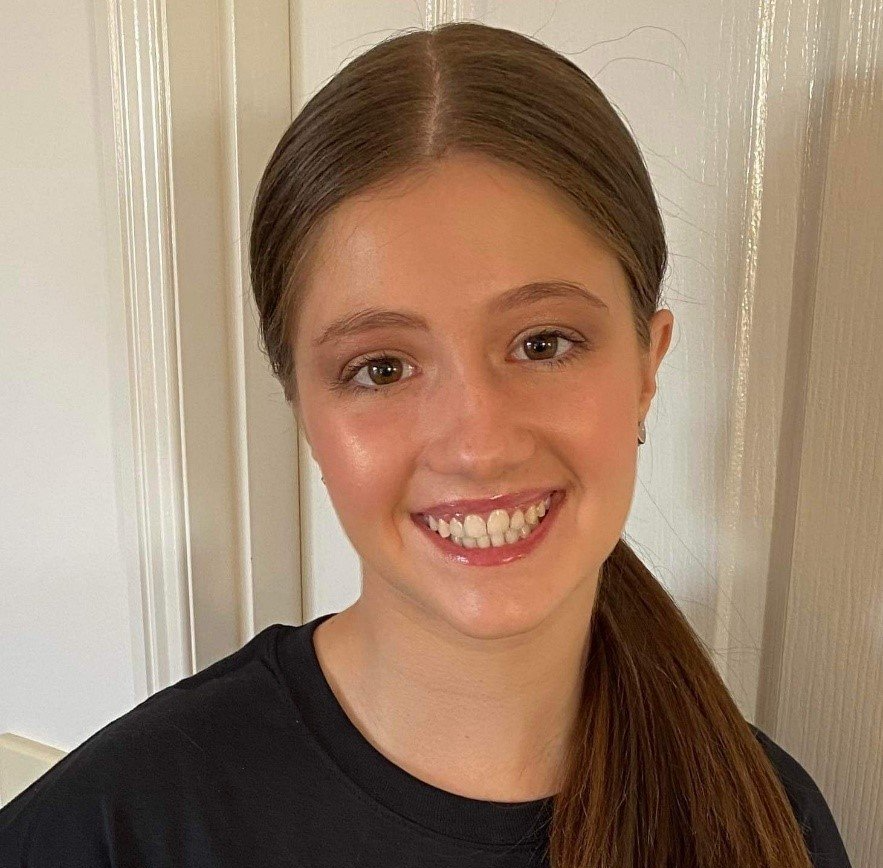
Our children are precious and provide hope for the future of this world. We nurture and guard them through their development into adulthood. Our hearts especially go out to those who have to learn to live with disfigurement. This caring does not diminish with the transition into adulthood, or indeed for adults suffering trauma and the effects of disease-causing disfigurements. Craniofacial care extends from cradle to the grave and our Foundation’s work is about restoring hope and dignity.
I would like to acknowledge the benevolence shown by donors to support our input aimed at mitigating the physical and mental trauma that craniofacial patients endure. It is making a real difference. Speaking as a Board Member we understand that donating has proven much tougher during the Covid disruption. So to those who have continued to support our Foundation, be it financially or in kind, we extend our most sincere gratitude. To those who have the opportunity in the future to share a little more of that benevolence, we welcome your assistance.
I consider it an honour, and I am proud to volunteer a little of my managerial brain and social heart as a Board member to keep the vision alive. As a grandparent, I too am equally grateful for the compassion and care that so many health professionals provide. So too, I recognise your input as donors and advocates to our cause, valuing it enormously and preciously protecting it at Board level to assure your contribution is put to best use. To fellow grandparents, you too are making a significant difference by providing invaluable support to your children and grandchildren in such difficult circumstances. As hard as it can be at times, keep up the excellent work.
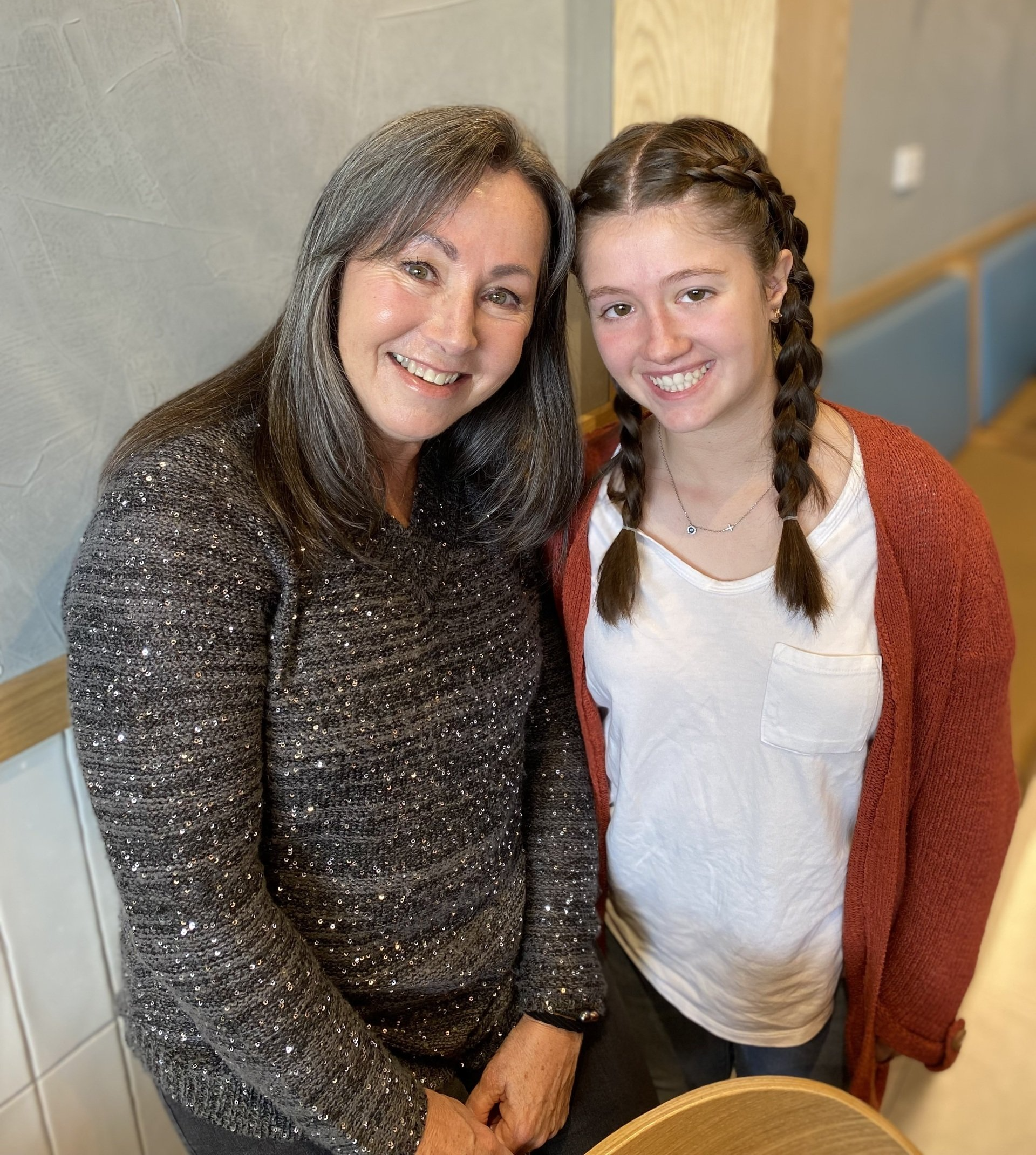
Annual General Meeting 2022
Craniofacial Australia's Annual General Meeting will take place on Wednesday the 16th of November at the David Roche Foundation, 241 Melbourne Street, North Adelaide SA 5006, starting at 6PM.
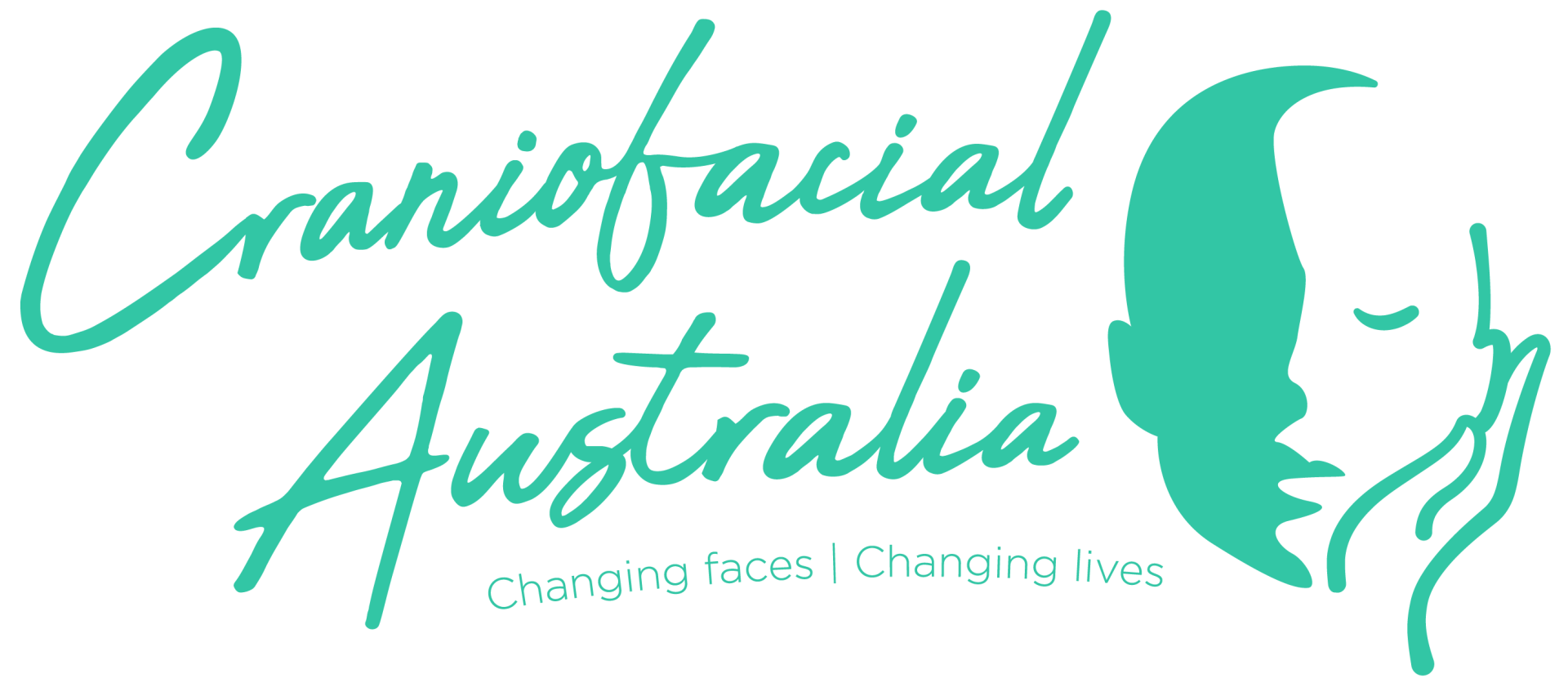
Royal Adelaide Show
In early September you might have seen us in Jubilee Hall at the Royal Adelaide Show! It was an exciting and busy week where we had the opportunity to meet many community members who have been affected by a craniofacial condition, whether directly or indirectly. We would like to extend our heartfelt thanks to the community members who volunteered at our stall, and to the members of the Refined Real Estate team who volunteered their time and sales expertise to help out.
Congratulations to our raffle winners!
At the Show we ran a raffle for gift baskets filled with goodies, including lovely handmade quilts, Lego sets donated to us by Variety, and lollies donated by Metropolitan Fresh. Congratulations to the six prize winners, including Jess, Kate, Glenn, Natalie, Jacob and Kathy.
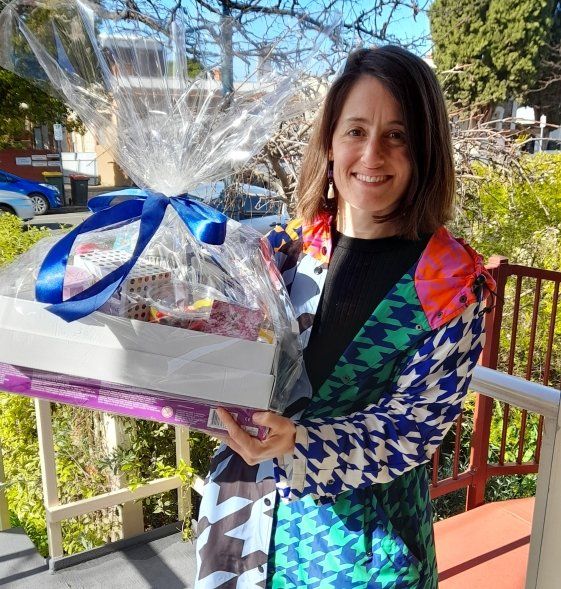
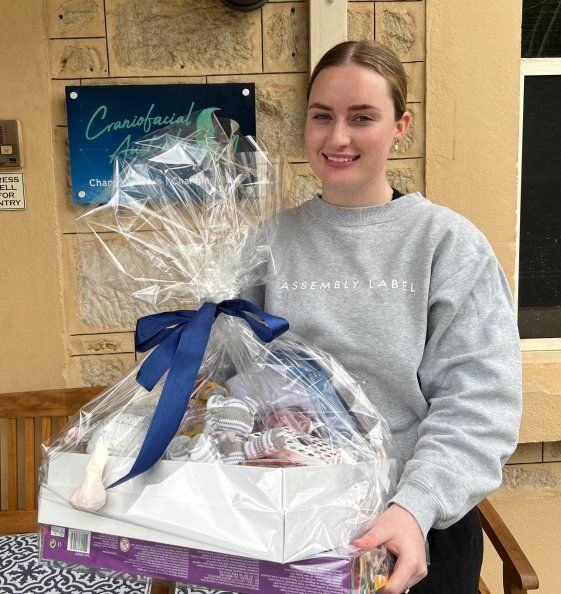
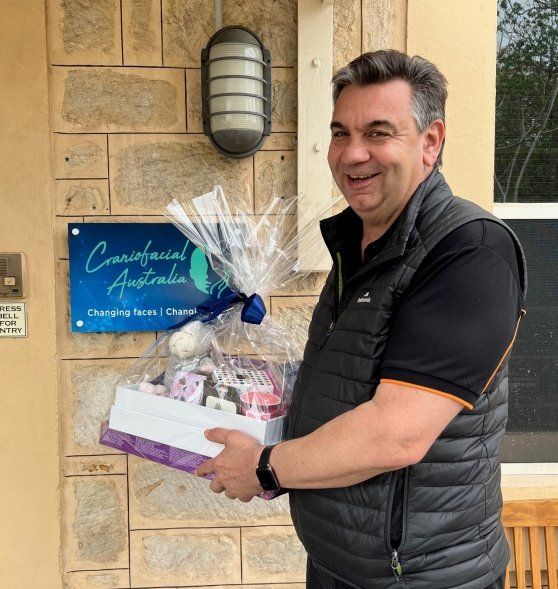
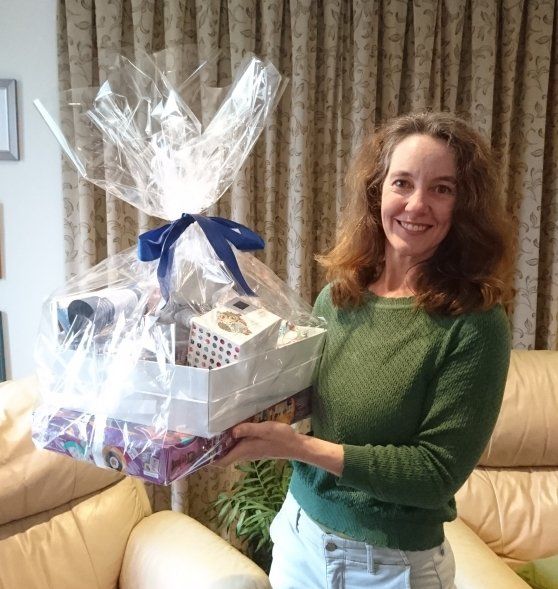




Recent Events
Come Dine with Me - Guess Who's Coming to Dinner?
‘Come Dine with Me – Guess Who’s Coming to Dinner?’ was an intimate but fabulous event. Host Sue Redman interviewed her guest Professor David AC, who spoke about how he became interested in craniofacial surgery and the long journey that began in Australia, taking him to Paul Tessier in France, the father of craniofacial surgery, where he was taught the fundamentals of the multi-disciplinary approach to successful complex surgery. He honed his skills in the UK and finally returned to Australia where he established the world-famous Australian Craniofacial Unit here in Adelaide. Everyone was enthralled in his story and would have happily skipped dinner to hear more. One person said: 'such an inspiring person'.
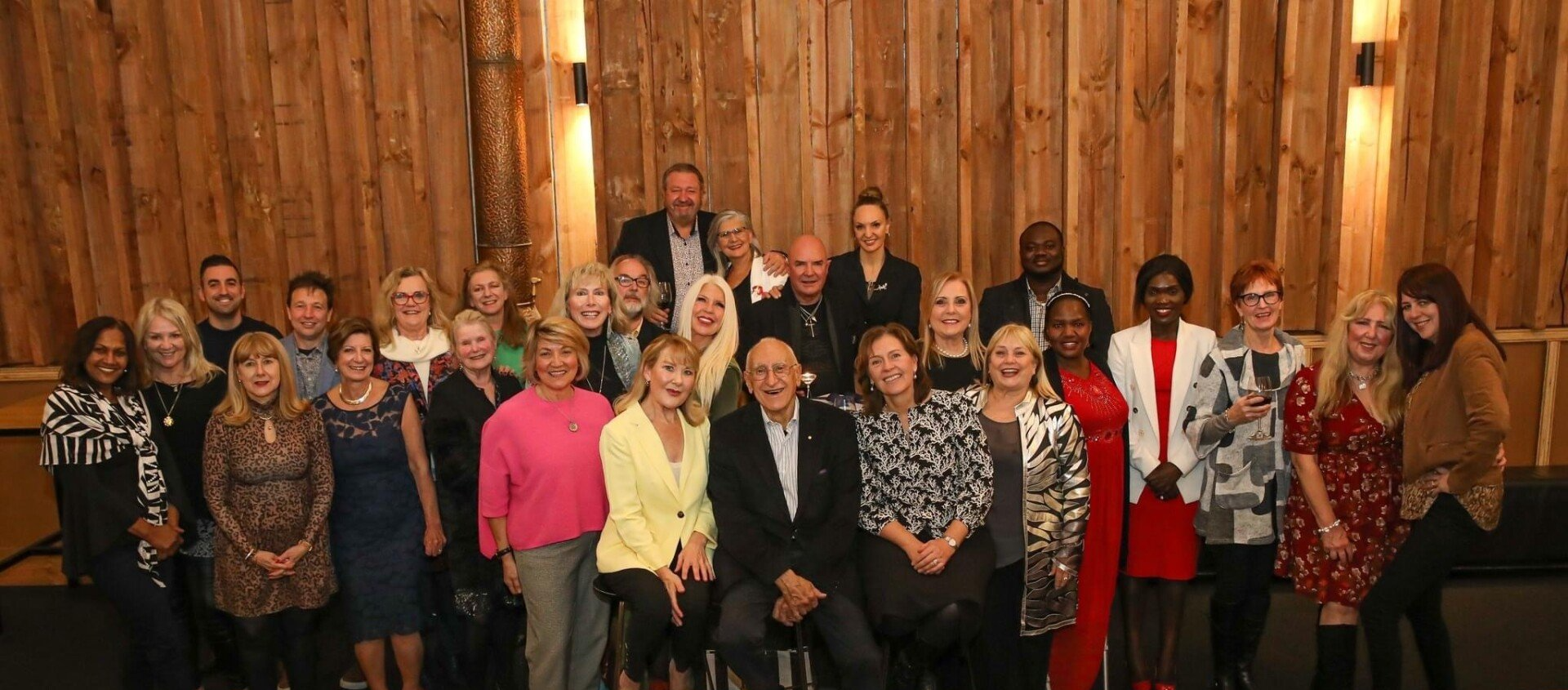
Golden Gavel Auction
Craniofacial Australia was the chosen charity at The Society of Auctioneers and Appraisers (SA) “Golden Gavel” event, held in August. Two of South Australia’s finest auctioneers went head to head in a bidding war that raised $2,700. We are grateful for the generosity and support of both auctioneers and bidders at this incredible event. Thanks also to Dr Ben Grave for his donation of a magnificent canvas and to Fili Jewellery Adelaide Arcade for their donation of an exquisite pearl necklace valued at $1,200.

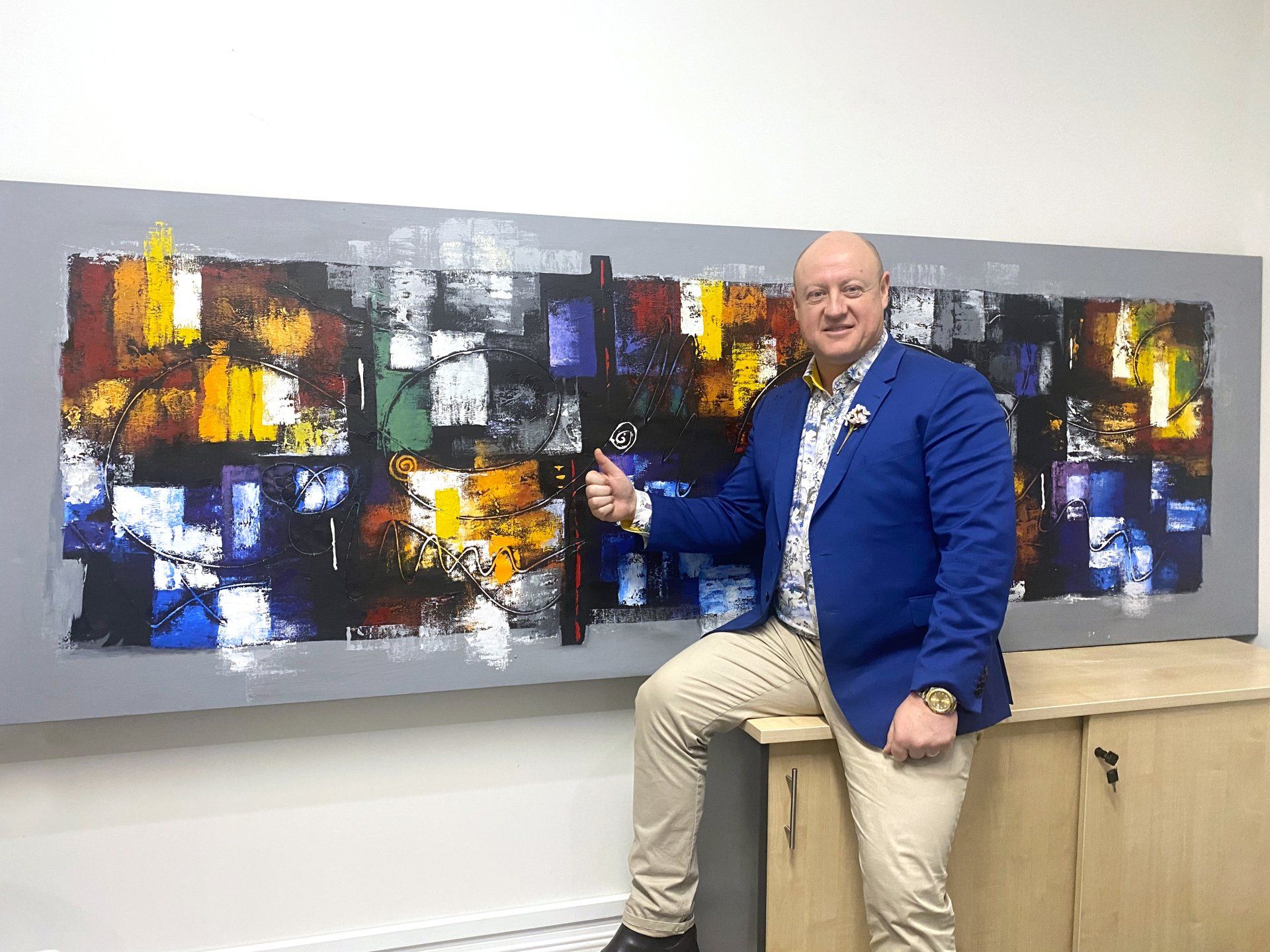
Lumary City-Bay Fun Run
We were thrilled to be at the City-Bay Fun Run in September. Thank you to Refined Real Estate for providing free ice-block refreshments and for their ongoing support. The energy, smiles and commitment of Adelaide’s walkers and runners was truly inspiring! Barbara’s Team “NBN”, represented by board member Nicholas Pyne, herself, and friend Nicholas Crouch, kept great pace and finished in two hours! Bravo.
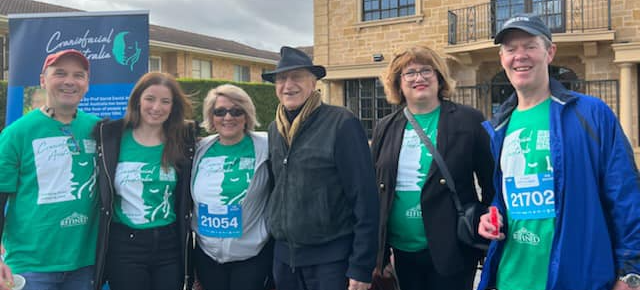
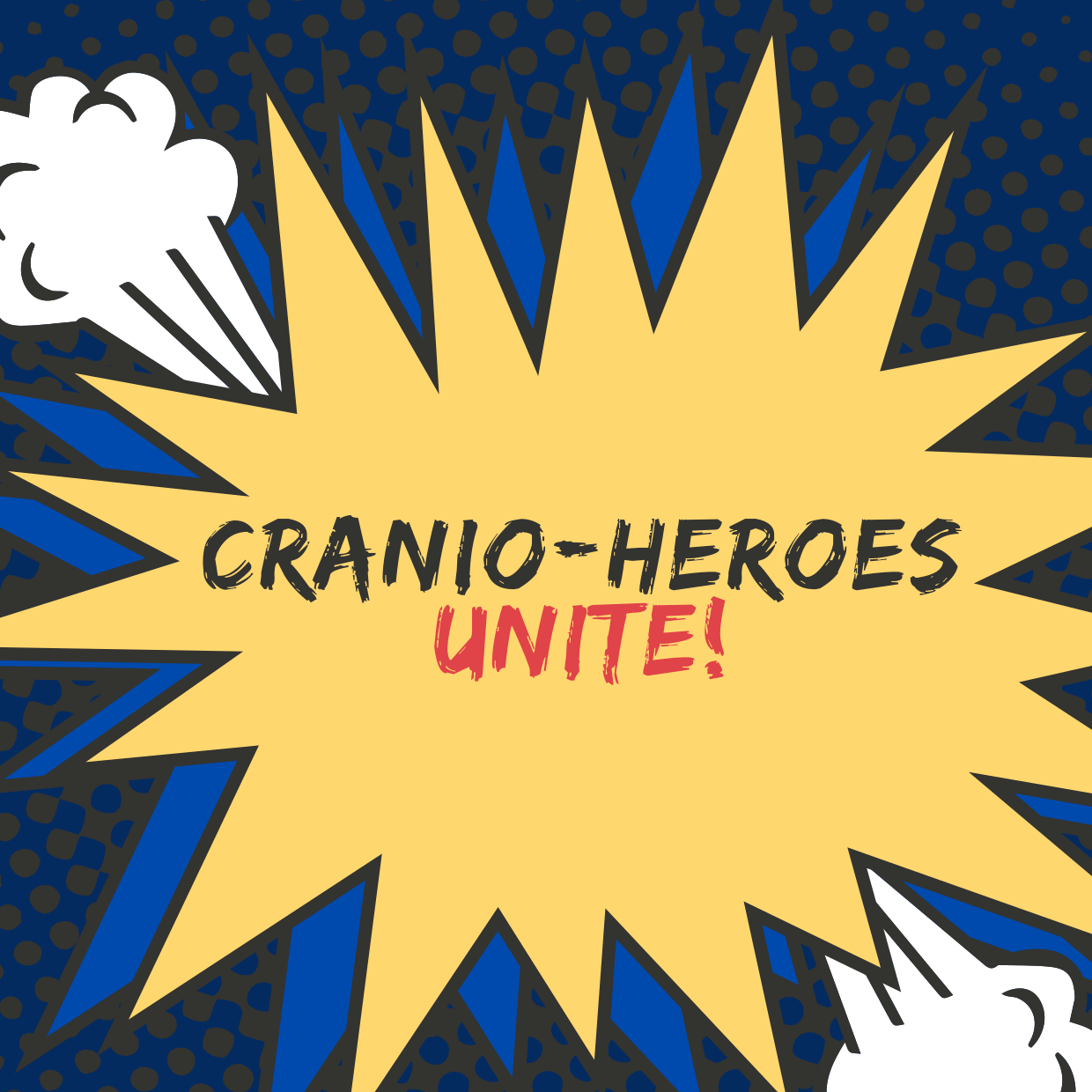
JOIN YOUR FELLOW CRANIO-HEROES FOR A CHRISTMAS CELEBRATION
YOUR MISSION:
DECORATE YOUR OWN PLASTER, FEAST ON LUNCH, PLAY GAMES & HAVE FUN!
TOP SECRET: WHO WILL SPOT SANTA?
SATURDAY 12 NOVEMBER 2022
12:30PM - 2:30PM
PLASTER FUNHOUSE WAYVILLE
41 GOODWOOD ROAD
WAYVILLE SA 5034
RSVP ESSENTIAL:
FRIDAY 4 NOVEMBER 2022
PH: 8267 4128
E: C.PANAGOPOULOS@ACMFF.ORG.AU

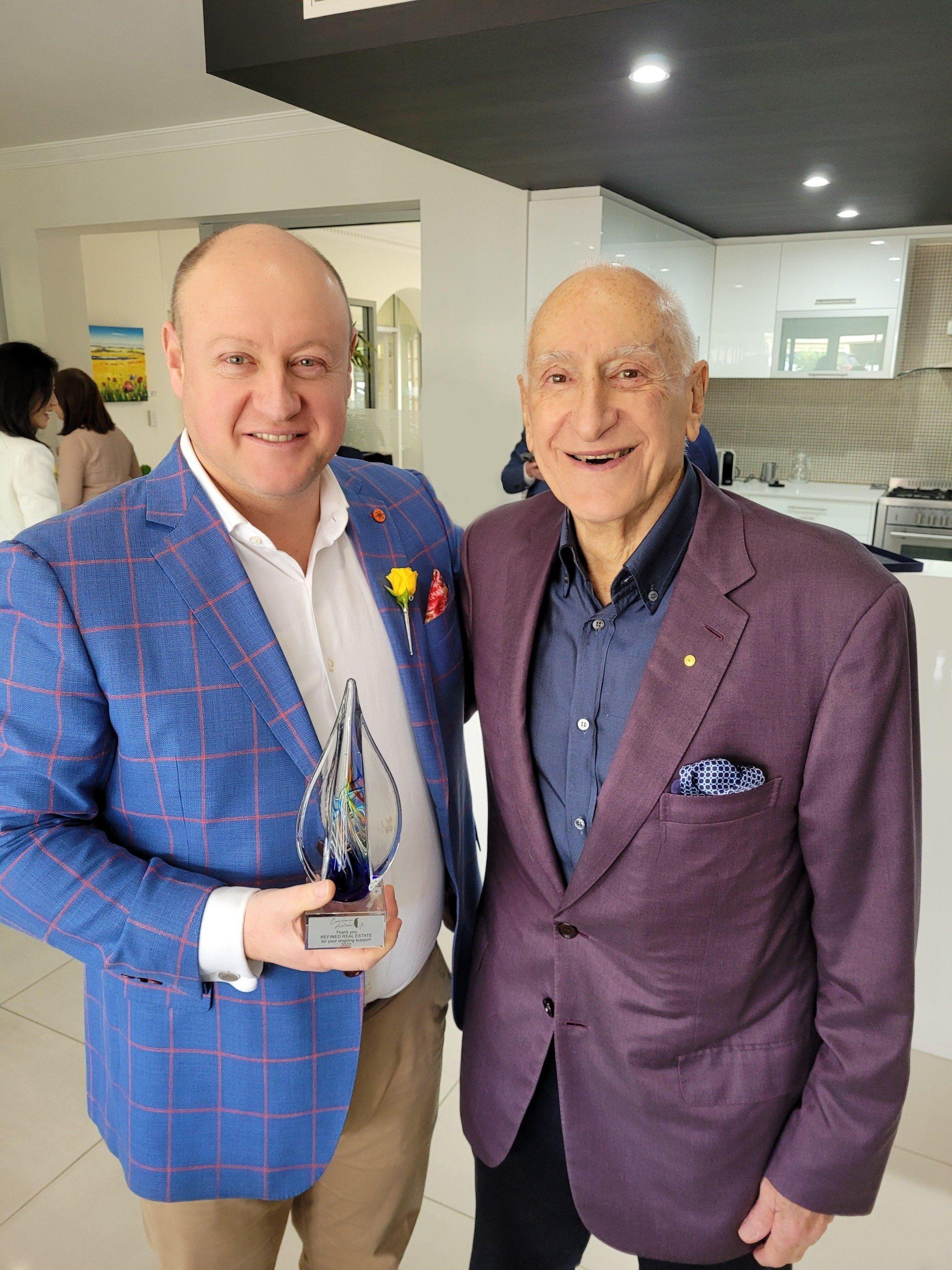
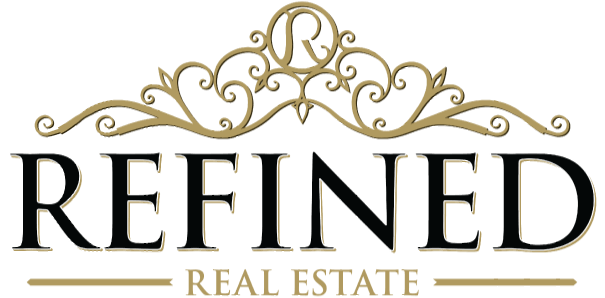
At Refined Real Estate we want to help our clients realise their goals and dreams. That’s why we partner with Craniofacial Australia, who helps people with craniofacial differences reach their full potential and follow their dreams. It gives our team an incredible feeling to know that for each property sold a contribution is going directly towards helping people receive life-changing craniofacial surgery.
The company was established and continues to grow with a core belief that a great business is built on great relationships and we pride ourselves on our relationship with Professor David and the Foundation. Refined Real Estate is far more than just a real estate agency. We are committed to helping our community thrive. To find out more about our commitment to community and to help you realise your property goals and dreams, please contact Victor Velgush or Cheryl Misso via email at reception@refined.com.au or phone 08 8357 9001.


At Refined Real Estate we want to help our clients realise their goals and dreams. That’s why we partner with Craniofacial Australia, who helps people with craniofacial differences reach their full potential and follow their dreams. It gives our team an incredible feeling to know that for each property sold a contribution is going directly towards helping people receive life-changing craniofacial surgery.
The company was established and continues to grow with a core belief that a great business is built on great relationships and we pride ourselves on our relationship with Professor David and the Foundation. Refined Real Estate is far more than just a real estate agency. We are committed to helping our community thrive. To find out more about our commitment to community and to help you realise your property goals and dreams, please contact Victor Velgush or Cheryl Misso via email at reception@refined.com.au or phone 08 8357 9001.
Research Update
Children diagnosed with sagittal synostosis often undergo cranial surgery in infancy in order to re-shape the skull and reduce the condition’s impact on the child’s appearance and development. However, findings in the research literature vary. This makes it difficult to provide clinicians, and consequently parents, guidance on the anticipated outcomes of these children.
To address this problem, Dr Amanda Osborn (pictured) and Assoc Prof Rachel Roberts are comparing the cognitive (e.g., IQ, memory), behavioural (e.g., conduct problems, hyperactivity) and psychological (e.g., anxiety, depression, quality of life) functioning of individuals with sagittal synostosis with that of age- and sex-matched individuals from the general community. Recruitment of both groups - people with sagittal synostosis and the comparison group - is underway with interested families able to access more information and register at https://health.adelaide.edu.au/sagittal-synostosis-study.
To date, 73 families from around Australia (sagittal synostosis group: 50; comparison group: 23) have completed online questionnaires. These surveys provide us with parent-rated and self-reported information from a series of age-appropriate behavioural and psychological questionnaires, such as the Behavior Assessment for Children and Behavior Rating Inventory of Executive Function. Eight families from Adelaide have additionally completed face-to-face cognitive assessments.
Recruitment is ongoing with results of the two groups to be analysed and compared in order to determine whether, and to what extent, specific cognitive, behavioural and psychological domains are affected by sagittal synostosis, particularly as children reach school-age and beyond. This knowledge will help clinicians provide parents with support about their child’s development, ensuring that children at risk of developmental problems receive monitoring and assessment as necessary.
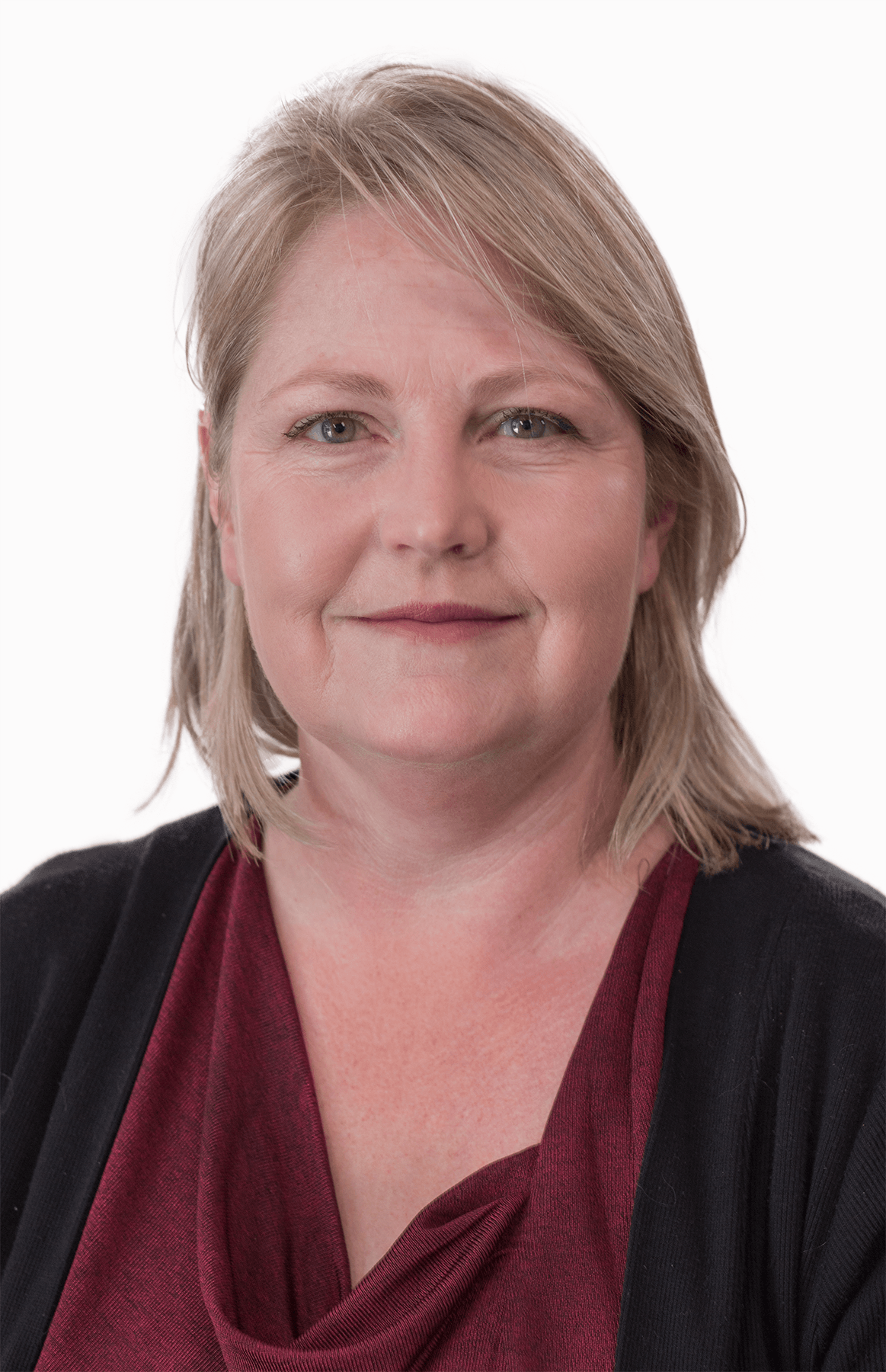
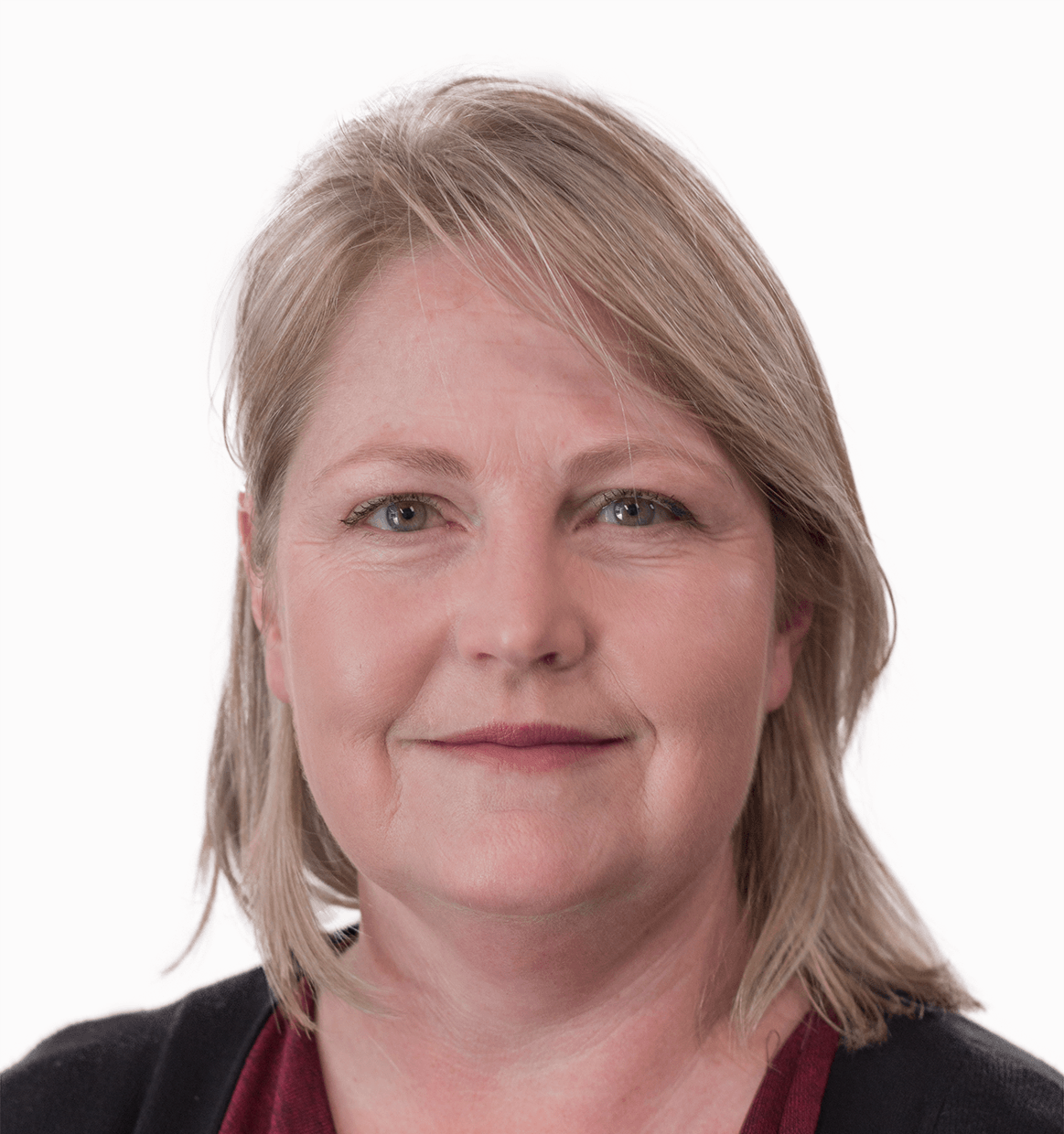
Children diagnosed with sagittal synostosis often undergo cranial surgery in infancy in order to re-shape the skull and reduce the condition’s impact on the child’s appearance and development. However, findings in the research literature vary. This makes it difficult to provide clinicians, and consequently parents, guidance on the anticipated outcomes of these children.
To address this problem, Dr Amanda Osborn (pictured) and Assoc Prof Rachel Roberts are comparing the cognitive (e.g., IQ, memory), behavioural (e.g., conduct problems, hyperactivity) and psychological (e.g., anxiety, depression, quality of life) functioning of individuals with sagittal synostosis with that of age- and sex-matched individuals from the general community. Recruitment of both groups - people with sagittal synostosis and the comparison group - is underway with interested families able to access more information and register at https://health.adelaide.edu.au/sagittal-synostosis-study.
To date, 73 families from around Australia (sagittal synostosis group: 50; comparison group: 23) have completed online questionnaires. These surveys provide us with parent-rated and self-reported information from a series of age-appropriate behavioural and psychological questionnaires, such as the Behavior Assessment for Children and Behavior Rating Inventory of Executive Function. Eight families from Adelaide have additionally completed face-to-face cognitive assessments.
Recruitment is ongoing with results of the two groups to be analysed and compared in order to determine whether, and to what extent, specific cognitive, behavioural and psychological domains are affected by sagittal synostosis, particularly as children reach school-age and beyond. This knowledge will help clinicians provide parents with support about their child’s development, ensuring that children at risk of developmental problems receive monitoring and assessment as necessary.

Prof Stan Gronthos and his team at the University of Adelaide have also continued their work in identifying chemical inhibitors that suppress bone formation in cranial suture stem cells. Their tests have identified a protein (C-ROS-1) that is highly active in the cranial bone cells of patients with the “Twist-1” genetic defect involved in the development of craniosynostosis or pre-fusion of the cranial sutures. By using an inhibitor drug, Crizotnib, they found that it temporarily halted the pre-fusion of those sutures in mice with a genetic defect that is also present in humans with Saethre-Chotzen Syndrome.
Experiments are currently underway to determine if a single dose or multiple doses of the inhibitor drug are capable of preventing craniosynostosis in mice, with the potential for the drug to be developed for humans as a safer and less invasive treatment for craniosynostosis than surgery.
204 Melbourne Street
North Adelaide SA 5006
Phone: (08) 8267 4128
Email: info@acmff.org.au
Sign up for our e-Newsletter
Welcome to the Craniofacial Australia family. We are thrilled to have you join this incredible craniofacial community of ours. At the centre are our families affected by a wide range craniofacial conditions, but an equally important part are our amazing donors, supporters, volunteers, researchers and medical professionals. Thank you for joining our community.
You will now receive our quarterly Newsletter – Changing Faces Changing Lives.
Don't forget to join our community on Facebook and Instagram, where you'll find regular updates on our craniofacial families and all the other happenings at the Foundation.
If you have any questions about our work or want to find out how you can get involved further, please do not hesitate to contact us direct.
If there’s scope to include a banner (such as the email footer banner below) which links to our donate page that would be great).
Many thanks,
Craniofacial Australia
P: (08) 8267 4128
Please try again later.
Registered Charity: CCP2573 | ABN: 29 008 155 780
All Rights Reserved | Craniofacial Australia
Web Design by Ignite Signs + Visual